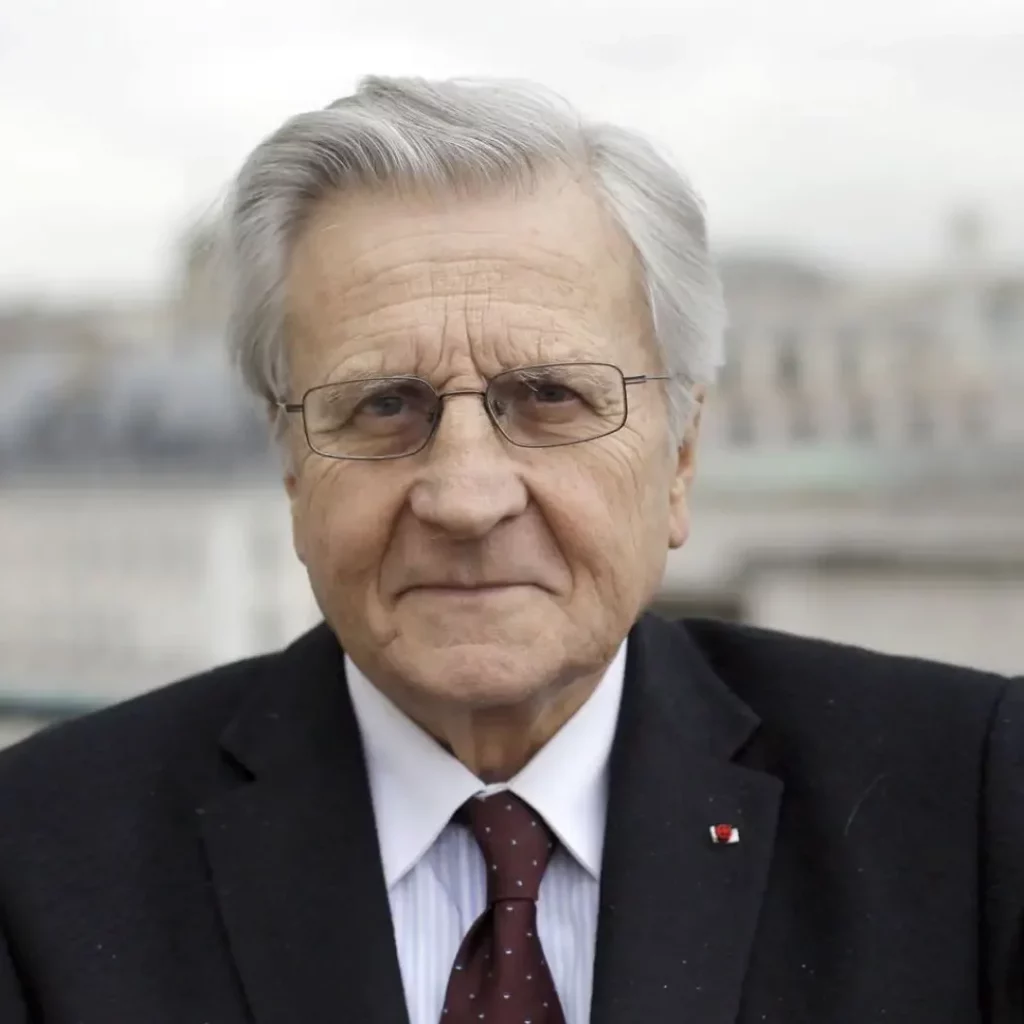
We were delighted to welcome Jean-Claude Trichet, former President of the European Central Bank and Governor of the Banque de France, to our investment conference in Paris on September 14, 2023.
Below is a retrospective of his speech.
Inflation: a multi-dimensional phenomenon whose components must be fully understood
2008, bankruptcy of Lehman Brothers: after this crisis, period of extremely low inflation, very low interest rates, the two obviously being closely linked.
Mid-2021: the explosion of inflation that took everyone by surprise. Those in charge were stunned, and it took 6 to 8 months before they realized that this was indeed a very serious matter, and that appropriate measures had to be taken.
Three questions then arise:
1/ How can we explain the fact that, over a long period of around ten years, we have seen extremely low inflation and interest rates very close to zero?
2/ How did the return of inflation trigger a radical change in monetary policy in every country in the world and on both sides of the Atlantic?
3/ We are now in a different universe, where inflationary pressures are strong: will we return to a situation of price stability?
1/ Why had inflation disappeared?
In the aftermath of the 2008 crisis, we have seen a disinflationary upsurge due to the acceleration of globalization and the optimization of the division of labor in global value chains in search of the lowest possible costs and therefore low prices.
We were also, throughout the period of very low inflation, in a period that can be caricatured as a period of confirmation of the weakening of unions’ bargaining power, characterized by very low nominal and real pay rises, mainly in the United States, but also in a fair number of advanced countries.
Another very important phenomenon, also observed in advanced countries but also at global level, is the famous ” savings glut “, i.e. the excess of global savings over desired investment, leading to low or even very low inflation and very low real interest rates.
Throughout the period, central banks embarked on a period of unprecedented monetary accommodation, multiplying the instruments they used to achieve maximum agility, not only conventional instruments such as extremely low interest rates, but also, of course, unconventional measures, notably the famous ” Quantitative easing ” (QE), in many different forms in different countries. These measures have contributed to an accommodating financial environment. In the minds of the central banks, they thus avoided the materialization of deflation, which was seen as a very real threat.
2/ Radical change in monetary policy
There were several reasons, both cyclical and structural, why we were able to go through such a period of over ten years, unprecedented since the Second World War, an extraordinary situation which justified the central banks’ focus on preventing the risk of deflation.
But in mid-2021, we will be witnessing a change of universe in both economic and structural terms:
Cyclical causes
COVID
We had witnessed an incredible compression in demand, which added to the considerable problems already encountered on the supply side. Monumental contraction, synchronized worldwide. Consumption picks up very strongly around mid-2021, at the start of the post COVID period, but supply remains handicapped by the previous crisis.
Inflation is on the rise. It’s classic: supply can’t keep up with demand.
Long reaction times
Authorities, governments, parliaments, central banks and the private sector took some time to understand that there was a real inflationary phenomenon, thinking it was transitory.
There had been a long ten-year period of extremely low inflation. In the eyes of many, this period had no reason to come to an abrupt end, simply because COVID had been involved. The new inflationary pressure was very much underestimated, and it took around 6-7 months before it was recognized that this was not transitory, and then another 3-4 months before appropriate decisions were taken on monetary interest rate policies.
Accommodating monetary policies
The accumulation of extremely accommodating monetary policies over a long period, both conventional and unconventional, has been a source of inflation linked to changes in the behavior of economic agents.
The highly expansive fiscal policies of the previous period
All countries with the means to do so had implemented extraordinarily dynamic fiscal policies. All countries were mobilized, and certainly the United States even more than the Europeans, which needs to be emphasized. The accumulation of expansive fiscal policies is also a cause of inflation.
The war in Ukraine
This war on Europe’s doorstep is an extremely serious event. This is the most visible element in the geostrategic drama currently unfolding. It is multi-dimensional and includes many other elements, including the conflict between China and the United States, the attempt to create a counterweight to the traditional power of advanced countries such as the enlarged BRICS against the G20.
We are currently undergoing profound structural changes worldwide. We Europeans are experiencing this war, which is an additional inflationary factor at world level, but particularly at European level, since our energy costs are much higher than those in the United States. The same applies to food prices.
Structural causes
They are ” secular “, i.e. they cover several economic cycles.
The acceleration of globalization is over
There is now a feeling that it would be a mistake to extend value chains too far across the planet. Companies that embark on this path as boldly as they have in the past are taking a big risk : value chains can be blocked for a variety of reasons : health reasons, natural disasters or causes linked to geostrategic and political events.
Globalization, which used to be accelerated, is now being slowed down. There are even some very spectacular measures, such as in the United States, which aim to repatriate numerous productions to American soil (Reshoring).
This is a very general, structural trend, which obviously works in the direction of inflation. We can no longer optimize and reduce costs by playing the international division of labor and the best possible prices to the limit.
The bargaining power of labor
Organized labor’s negotiating capacity had been extremely weak in the previous period. What was once an economic problem has become a political one in all advanced and emerging countries. The idea that inequalities have grown considerably, that they have become unacceptable, that there needs to be a better distribution of income is something that is now widespread.
This is true in every country. In France, we can’t say that labor’s bargaining power has been swept under the carpet, because that’s neither the tradition nor the culture of our country. But what happened in the United States during the last two presidential elections can be interpreted as the emergence at the political level of this deep dissatisfaction of the ” blue collar ” lower middle class. Trump triumphed on a pro-blue-collar line that was not at all the previous Republican line. So we’re witnessing a very profound change not only in the United States, but in many other countries too.
The green transition
The green transition is generally presented as a win-win situation. We’re going to save the planet, which is our spaceship, shared by all humanity. To achieve this, we’re going to create new products and new jobs, and thus profoundly transform our economies. This is all true, but it’s also more complicated !
What’s not true is that it can be done at no cost. We’re going to have to invest much more in the green transition. What’s more, the capital stock we currently have worldwide is becoming obsolete. It needs to be replaced.
The famous ” savings glut “, the global savings glut, should turn around. The enormous mass of green transition investments should absorb the excess savings worldwide.
We will therefore see a surge in global inflation, which is symmetrical to the deflationary surge seen in the previous ten years. What’s more, we should see higher real interest rates than before.
We still don’t know exactly where we stand in the green transition. Current projections seem far too optimistic, given people’s acceptance of the cost of their standard of living.
Whatever the cost, this green transition remains absolutely necessary. We’re still in a spaceship that’s taking colossal risks right now, and will probably unfortunately see those risks materialize over the next 30 or 40 years.
3/ Will we return to a situation of price stability?
Inflation in Europe and the United States of America are two different realities.
In August 2023, the total inflation rate in Europe will reach 5.3%, compared to 3.2% in the US. This difference is due to a supply shock linked to the war in Ukraine. Europe is more dependent on energy and food imports than the United States, making it more vulnerable to rising prices for these goods. Core inflation, which excludes energy and food, is 4.7% in the United States and 5.3% in Europe. This difference is smaller, but it shows that Europe is also affected by demand inflation, linked to the post-pandemic economic recovery.
The ECB has raised interest rates 10 times. The total increase is lower than in the United States. This difference reflects the difference between the supply and demand shocks affecting the two regions.
We all face the same inflationary environment and the same major difficulty in coping with it, for different reasons.
Inflation is a major problem worldwide, but should return to normal in the medium term.
The central banks wanted to prove their seriousness. They were slow to react, but then they acted vigorously. It inspires confidence. They reaffirmed that a return to price stability in the medium term was essential. In all the major advanced countries, and in almost all the countries of the world, the central banks have been talking up stability.
Remarkably, the four major central banks of the advanced countries have all reaffirmed their objective of price stability of around 2% over the medium term. This unity is important because it shows that central banks are determined to fight inflation.
